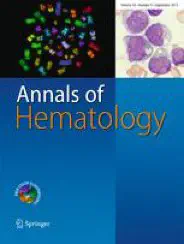
Abstract
Endogenous danger signals are increasingly recognized in the pathogenesis of graft-versus-host disease (GVHD). Uric acid (UA) is a known danger signal and is released from injured cells during conditioning for allogeneic hematopoietic stem cell transplantation (HSCT), but its role in GVHD is unclear. Here, we retrospectively analyze 228 consecutive patients with malignant diseases undergoing HSCT from 10/10-HLA-matched donors. Low UA levels at the time of HSCT (day 0) were significantly associated with acute GVHD grades II-IV in univariate (HR 0.836, p,=,0.0072) and multivariate analyses (HR 0.815, p,=,0.0047). There was no significant association between UA levels and overall survival, non-relapse mortality, and relapse. This is the first report demonstrating a negative association between UA levels and acute GVHD. Due to the easy assessment and established pharmaceutical modification of UA, our findings are potentially clinically relevant. Confirmation in independent cohorts and further investigations into underlying mechanisms, such as reduced antioxidative capacity in hypouricemia, are warranted.